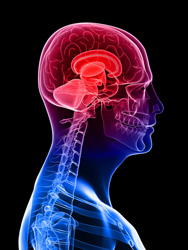Mini-probe to shed light on neurodegenerative diseases
As the baby boomers across Europe approach old age, neurodegenerative diseases such as Alzheimer's, Creutzfeldt-Jakob and Parkinson's are on the rise. Small cell-signalling molecules called cytokines are known to play a crucial role in triggering neuro-inflammatory ailments, but their observation and control has been very challenging so far. Funded under the EU's Seventh Framework Programme, the Cell-Microprobe project has come much closer to improved observation and control. As the name suggests, the project has developed microprobes to stimulate single neuronal cells and detect inflammatory signalling compounds in real time. This required the development of a miniature - or microfabricated - electrochemical probe (EP) that has a 200\;µm wide flat tip with four independent microelectrodes, each 20\;µm long and 20\;µm apart. The new probe sheds light on the dynamics of isolated cell secretion and has lead to an innovative biosensing approach. The latter involves bringing the sensing part of the probe (antibody-functionalised electrodes) much closer to the cell in order to detect the excreted proteins. Testing of the new methods showed that the probe was almost twice as effective as previous methods in concentrating critical protein molecules for better observation. Calculations also showed that detection can be performed within 10 minutes, a timescale adapted to the actual protein release rate. However, some tweaking of the system was needed to detect antigens. So the team introduced palladium nanostructures into the tip of the electrode surface on the probe, resulting in a conductive surface that was 10 times more effective than before. This nanostructuring technique, according to the team, could lead in the near future to improved immobilisation of nanobodies and higher biosensing properties of the probe. This means that the scientific community is one step closer to understanding neurodegenerative diseases and hopefully treating them more effectively at an early stage.







